Fostering Creativity
I’ve recently been speaking with Dr. Elliot Rabin, who edits the RAVSAK journal Hayidion, about the power of creativity in the classroom. I told Elliot about the exercise that Larry Rosenstock, Founding Principal and CEO of the High Tech Schools in San Diego, CA, and his faculty do in professional development sessions they run: they ask educators to discuss the most memorable learning experience they’ve ever had. Larry talks about the fact that most often the experience that people recall best is one in which they were creators.
Creating as Learning
Last year, Azul Terronez, High Tech Middle School Humanities teacher, and Marc Shulman, High Tech MS Math and Science teacher, did the memorable learning exercise at Magen David Yeshivah HS, one of the I.D.E.A. School Network’s Founding Schools. When I thought about my most significant learning experience, this is what I came up with:
My best friend growing up was Joni Hofstadter; she and I were inseparable as children, in and out of school, and in the sixth grade at Emek Hebrew Academy, we decided we wanted to bring the story of Ruth to dramatic life. We asked our principal — Rabbi Philip Wachsman — for permission, and I remain eternally grateful to him not only for not quashing Joni and my enthusiasm but for giving us the freedom to bring our idea to fruition. In my memories of the project, I don’t recall a lot of teacher involvement; I have a feeling of being given the creative leeway to work on our project however we wanted to.
To complete this self-directed project, Joni and I read Ruth closely and wrote a script from the story. We then selected a cast from our female classmates and worked with them as well as on painting extensive sets and getting costumes for the show. We rehearsed endlessly and then performed the show for our parents and school community.
I can still feel the tremendous sense of accomplishment I had from this creative endeavor, which unbeknownst to me at the time was the first project-based assignment I had completed. I can also tell you the learning experience had deep emotional, social, and religious significance for me. I had done it with my best friend and classmates, a group of young Jewish girls who had just brought to life one of the most compelling and inspiring Jewish women in our history. I can still hear the voice of Osnat Surkin, the beautiful Israeli girl who played Ruth and sang the words of devotion that Ruth utters to Naomi when she insists she will not leave her. And I can still feel the sense of camaraderie as my classmates and I painted and rehearsed, begging any teacher who would let us for class time we could appropriate to get ready for our play.
The Power of Creative Learning
Contributing to the power of this educational experience was the fact that it was so creative; it engaged almost all of the arts — drama, song, the visual arts (in the set design), and creative writing (in the script). It’s hard to imagine the experience would have been as deeply rewarding and resonant if those creative elements hadn’t been a part of it. They were the foundation on which the learning, collaboration, and presentation rested.
What if school were always like this? A place where students engaged passionately, creatively, and collaboratively in what inspired them? What if classes focused as equally on the social, emotional, and religious development of a child as they did on his/her cognitive development? If curriculum were designed to address the hand, head, and heart?
Transforming School
Larry Rosenstock has been actively transforming how school is done for the past 15 years, and his commitment to creative learning is changing the educational landscape, particularly at Magen David Yeshivah HS, which has sent educators at different times this year to the High Tech schools, on visits and to attend workshops. As a result, we’re making significant changes to the way we run our school. Just this past week, I was invited with Ms. Naomi Weiss, Magen David’s teacher mentor, to a Presentation of Learning in Mrs. Leah Cymet’s sophomore Spanish class. The class, comprised only of young women, had been tasked with creating a business presentation and a commercial for a product. The class had chosen to “form” a luxury goods business and created a prototype of a purse they were going to sell, a billboard, business cards, and a commercial for the company. The students presented their information and had filmed the commercial entirely in Spanish, showing fluency and command of the language. After the presentation, the girls reflected on their experience with the PBL unit.
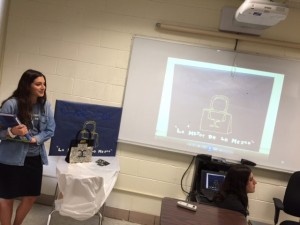
Sophomore girls assigned each other roles in this creative PBL unit. Needed for the project were writing, presenting, video production and editing, and artistic skills
They commented on the collaboration and communication skills they developed and also on the deep learning that occurred because of the project. One of the young ladies, Rozie Shamah, said she learned more Spanish from the project than she would have in a traditional classroom, because 1) the experience wasn’t about just opening a textbook, and 2) she needed to know the words she had to use in the commercial. She also noted that listening to the commercial over and over again as she edited it perfected her recall of the words. The girls also told us that they learned how to be good critics of their work: they said they had to make the work excellent, and that need forced them to find ways to give constructive criticism in a helpful and productive manner.
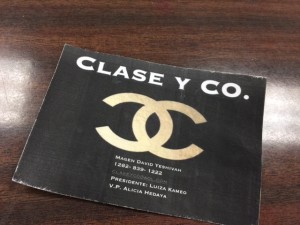
One of the class’ business cards. Students told us they wanted to improve their digital literacy skills for the next project by learning Photoshop
When Ms. Weiss and I asked additional questions about the learning process, the girls continued: they said they developed their creativity skills, not only needing them to come up with multiple ideas but also to adapt organically to the dynamic way the project unfolded.
The Result
What I felt in the classroom as I asked the girls questions and as they answered freely and sincerely was an enthusiasm for their work and for the teacher who had given it to them. They were full of gratitude and love for Mrs. Cymet, calling her the best teacher and praising her for being an effective project manager, one who gave them guidelines but also the freedom to develop the project as they saw best. Mrs. Cymet, in turn, praised her “smart, talented, extraordinary girls.” There was a lot of love in the room.
What the project reminded me of was all the positive feelings that I associated with my Ruth PBL unit, including — during this month of teacher appreciation — gratitude towards the administrator who let me and Joni run with it. What gets unleashed as a result of learning that is filled with opportunities to create and be creative is a host of beneficial emotions that make the experience not only deeply satisfying but also highly memorable.
Moving Forward
Today at Magen David HS, we had one of our last professional development days of the year. We’ve come almost full circle: in a month, it will be a year since I joined the school’s administrative team and engaged with the faculty in the exercise the High Tech teachers had us do. I’m amazed by the openness to creative learning the school’s faculty has shown, and today gave us the chance to get creative about our curricula for the coming year.
The school’s principal, Rabbi Saul Zucker, has even built into the schedule for next year common planning time for the secular and Judaic studies staff, so we have opportunities to meet to continue our interdisciplinary discussions. Larry Rosenstock has said that when he enters schools and asks them if they’re serious about cross-disciplinary projects — the ones his school has made famous — he always asks them if teachers have common planning time. If the answer is “no,” he walks out and tells the school to call him when they do.

Professional development today consisted of time for departments to discuss interdisciplinary projects for the coming year. Here, the math department meets with the head of the school’s art department Mrs. Natalie Greenberg. On the table are samples of projects from the High Tech schools, all of which can be found on the schools’ website
We’re getting ready to wrap up another school year and begin summer vacation, a time loved by children for the freedom it affords, but also for the opportunities for play it offers. Freedom and play spark our imaginations and are at the root of creativity, and they are things we should actively foster in our schools. They are what excite us about learning and, ultimately, what make it so memorable and rewarding.
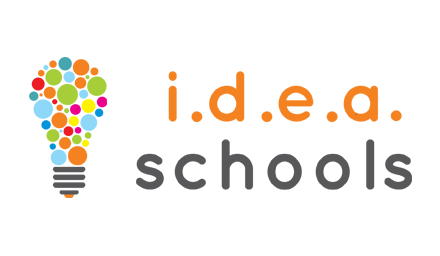
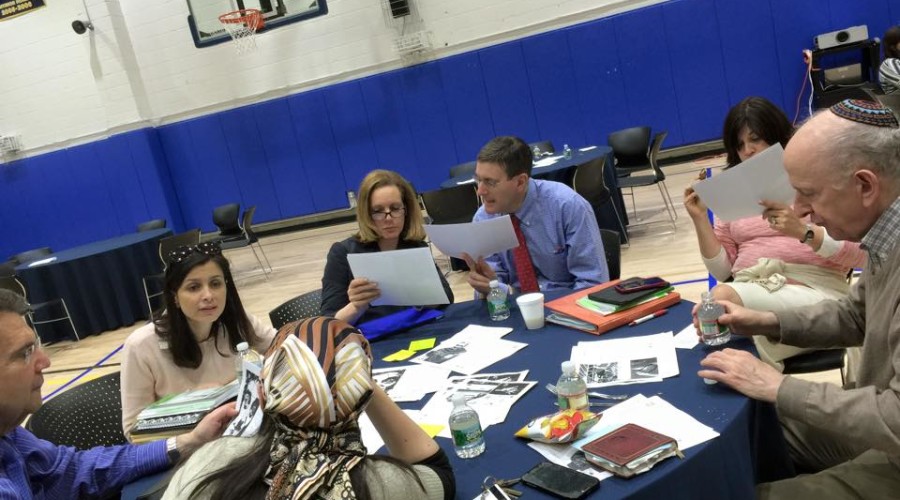
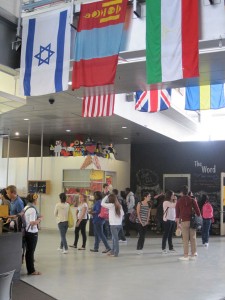
Recent Comments